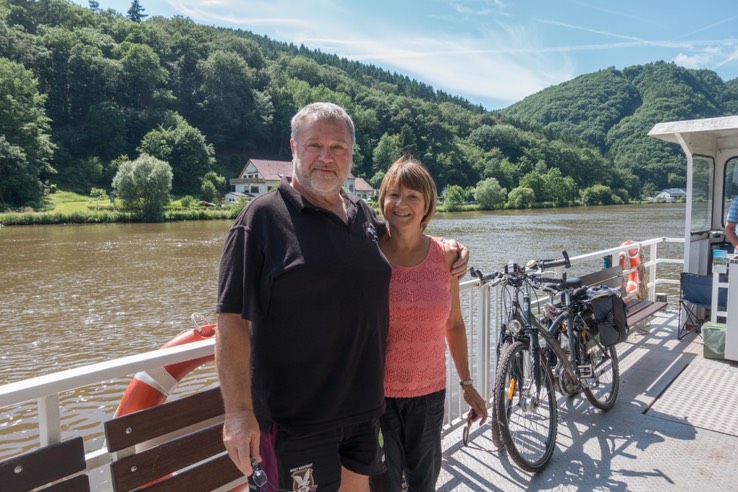With long awaited beautiful sunshine we cruised along wine hills and pine forests to Mettlach.
A couple of weeks ago, when we were here by train, we walked along the outside of the big loop of the river and climbed up to the view point called “Cloef”.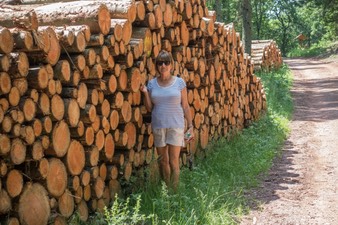
This time, after mooring on a pontoon just above the lock, we walked up through the pine forrest on the inside of the loop. The walkways were rather muddy, but the pine wood smelled wonderful until we came upon a dead deer which obviously had been caught in a mudslide during the previous heavy rains. On the loop’s ridge stands the old castle “Montclair”, a popular destination for walkers. The castle harbours tools,weapons and pottery from the Roman times.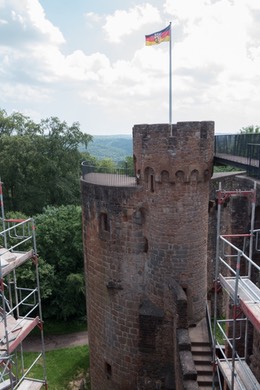
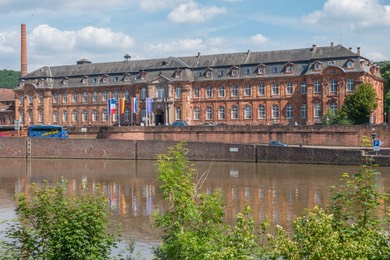 I couldn’t wait to drag Austin into the Benedictine Abbey downtown, the home of the ceramics and porcelain company, Villeroy & Boch. The Experience Centre “Erfahrungs Zentrum” leads the visitor through the amazing ever changing designs and products on the background of world history. Even the family history of Villeroy and Boch over some 200 years is amazing. Kings and popes have been their guests and eaten of their famous dishes. Starting in 1748 in a small farm shed in a village which is now within France, the family business of Villeroy & Boch has now shops in 120 countries. Beautiful dinner sets with patterns inspired by French gardens, the Amazon, even space travel and innovative bathroom fixtures are on display here.
I couldn’t wait to drag Austin into the Benedictine Abbey downtown, the home of the ceramics and porcelain company, Villeroy & Boch. The Experience Centre “Erfahrungs Zentrum” leads the visitor through the amazing ever changing designs and products on the background of world history. Even the family history of Villeroy and Boch over some 200 years is amazing. Kings and popes have been their guests and eaten of their famous dishes. Starting in 1748 in a small farm shed in a village which is now within France, the family business of Villeroy & Boch has now shops in 120 countries. Beautiful dinner sets with patterns inspired by French gardens, the Amazon, even space travel and innovative bathroom fixtures are on display here.
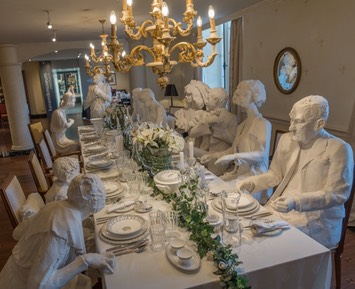
On the second floor of the exhibition is a lively presentation of the Wedding dinner of Octavie Villeroy and Eugen Boch for their golden anniversary in life sized plaster figures. The museums cafe itself is lovingly tiled, and the cakes and coffees are of course served with Villeroy and Boch crockery.
Of course, Mettlach has several outlet shops with a wide range of porcelain and glass ware, including Christmas and Easter decorations. This could have been a very expensive stop for Austin, but unfortunately we haven’t got any more storage on board!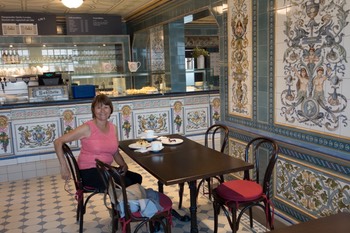
The abbey park harbours a huge ceramic mosaic spread over 12 boards and consisting of 137,008 tiles. As the “Worldmap of Life” the mosaic shows the richness of nature, but also the threat to the environment. It is guarded by the “Earth- Spirit”, a sculpture half plant, half animal, originally created for the World Wildlife Fund Expo 2000 in Hannover and later brought to the Boch park.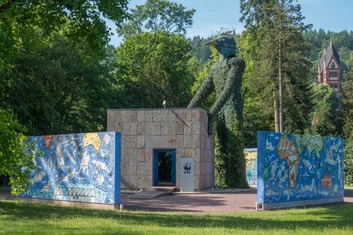
Across from the abbey surrounded by parkland, the former Boch family seat “Castle Saareck”with its ivy covered tower looks like the home of Briar Rose. Next to it you find the family’s former horse stables.
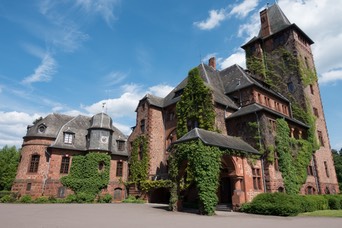
With no means of transporting Castle Saareck or the crockery and crystal sets, there was nothing left to do but to swing ourselves into the saddle and cycle to the other side of the Saarloop. We crossed the river by ferry and then followed the towpath on the river bank back to town.